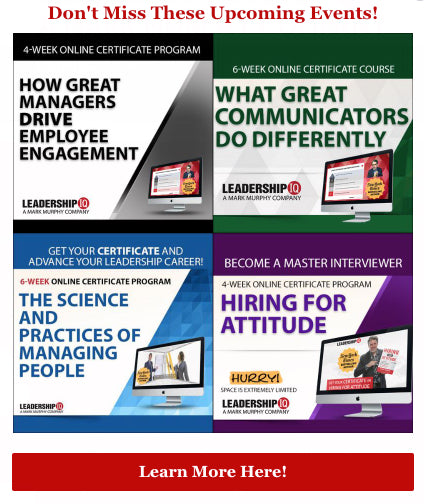How To Stop A Presentation That's Going Badly
 I learned at Skip Barber’s racecar driving school that “when you spin, put both feet in.” This means that if you’re on the racetrack and your car spins out, press the clutch and brake hard, fast and simultaneously. It’s your best chance of stopping without crashing into the wall. The same rule applies to presentations.
I learned at Skip Barber’s racecar driving school that “when you spin, put both feet in.” This means that if you’re on the racetrack and your car spins out, press the clutch and brake hard, fast and simultaneously. It’s your best chance of stopping without crashing into the wall. The same rule applies to presentations.
Years ago, I was part of a multi-company team making a sales pitch to the c-suite of a large company we’ll call CompuGlobalDyne.
I presented last, so I got to watch the other presenters. It wasn’t pretty. The guy before me (let’s call him Rock) was especially bad—he had a 20-minute time slot and a 50-slide deck. The presentation was pretty dry up to this point, but Rock put the CEO of CompuGlobalDyne over the edge.
 The poor CEO was sighing and slouching in his chair, until finally he completely shut down, with arms crossed in a death grip and a scowl. And Rock just kept clicking his slides, oblivious. Finally, Rock finished his deck and passed me the metaphorical baton. In that moment I had a choice: present my deck and hope the CEO didn’t punch me, or just stop the presentation. The CEO was a big guy, so I opted to stop the presentation.
The poor CEO was sighing and slouching in his chair, until finally he completely shut down, with arms crossed in a death grip and a scowl. And Rock just kept clicking his slides, oblivious. Finally, Rock finished his deck and passed me the metaphorical baton. In that moment I had a choice: present my deck and hope the CEO didn’t punch me, or just stop the presentation. The CEO was a big guy, so I opted to stop the presentation.
I said: “I don’t think y’all are super happy with what you’ve seen so far, and I think I’m going to make that worse, so I’d like to relinquish my time and just let you go 20 minutes early.”
Two things happened.
First, the other consultants whirled on me with crazy eyes thinking I had just ruined their sales pitch. Clearly, they were ignorant of the fact that our sales pitch was already dead. But, I had just violated what they thought was a cardinal rule of presenting: never stop, no matter how bad it’s going.
The second thing that happened was that the ticked-off CEO looked at me and said “well, we’ve sat through it this long, I want to hear what you have to say.”
To which I replied “Sir, I’m quite certain you don’t want to hear what I have to say. Let’s just end this and part as friends.”
And of course, you know what the CEO said next–“Let me hear your damn pitch!”
So, I said that I would make him a deal; I would show him 2 slides and speak for 2 minutes. If he wanted to hear more I’d keep going, but if he wasn’t interested I would stop.
He did want more, so I ended up giving him the whole pitch.
Lest you think everything was rosy, CompuGlobalDyne didn’t hire any of the firms on this consulting team. But, 2 years later, that CEO was at a new company and he did hire my firm.
Because, he told me, I was the only person that day who cared more about meeting the audience’s needs than finishing the slides in my deck.
In the years that followed, as I studied thousands of great leaders and presenters, I discovered that many great presenters will stop a presentation that’s going badly. They seem to understand that there’s no point in finishing a presentation that the audience doesn’t want to hear (and it’s not like we get a special prize for reaching the last slide).
Between my research and some hard-won life experience, I developed a simple approach for stopping (and restarting) a bad presentation.
 First, stop the presentation. If it’s going so badly that you can see it on the faces of your audience, you’re not going to steer your way out of it. So just stop. I like to say something like “Let me stop for a minute, because I have a feeling I’m not hitting the mark here.”
First, stop the presentation. If it’s going so badly that you can see it on the faces of your audience, you’re not going to steer your way out of it. So just stop. I like to say something like “Let me stop for a minute, because I have a feeling I’m not hitting the mark here.”
Not only does stopping the presentation keep you from (figuratively) crashing into a wall, it also awakens your audience. So few presenters have the courage to stop a presentation that it’s a surprise. And with presentations going badly, it’s a very nice surprise.
Second, don’t just stop your presentation; try to restart it. The approach is asking the audience “I know the presentation wasn’t hitting the mark, but is there 1 question you really wanted to get answered today? Because I’m happy to spend a few minutes just tackling that issue directly.”
This gives your audience comfort that you do want to meet their needs, and it tells you what those needs are.

A more advanced version of this is asking your audience “Should I pack up and tell headquarters I really messed this meeting up, or is there anything I can share in the next 6 minutes that would add some value to you?”
This version is not for the faint-hearted, but if done with the right amount self-deprecation, it can absolutely wow your audience and immediately turn them from adversaries to allies.
You’re going to have a presentation go badly. That’s okay as long as you know how to respond. Don’t bury your head in the sand and hope that it magically turns itself around. Stop the presentation, engage your audience in helping you fix the presentation, and there’s a very good chance they’ll ask you to
present even more.








